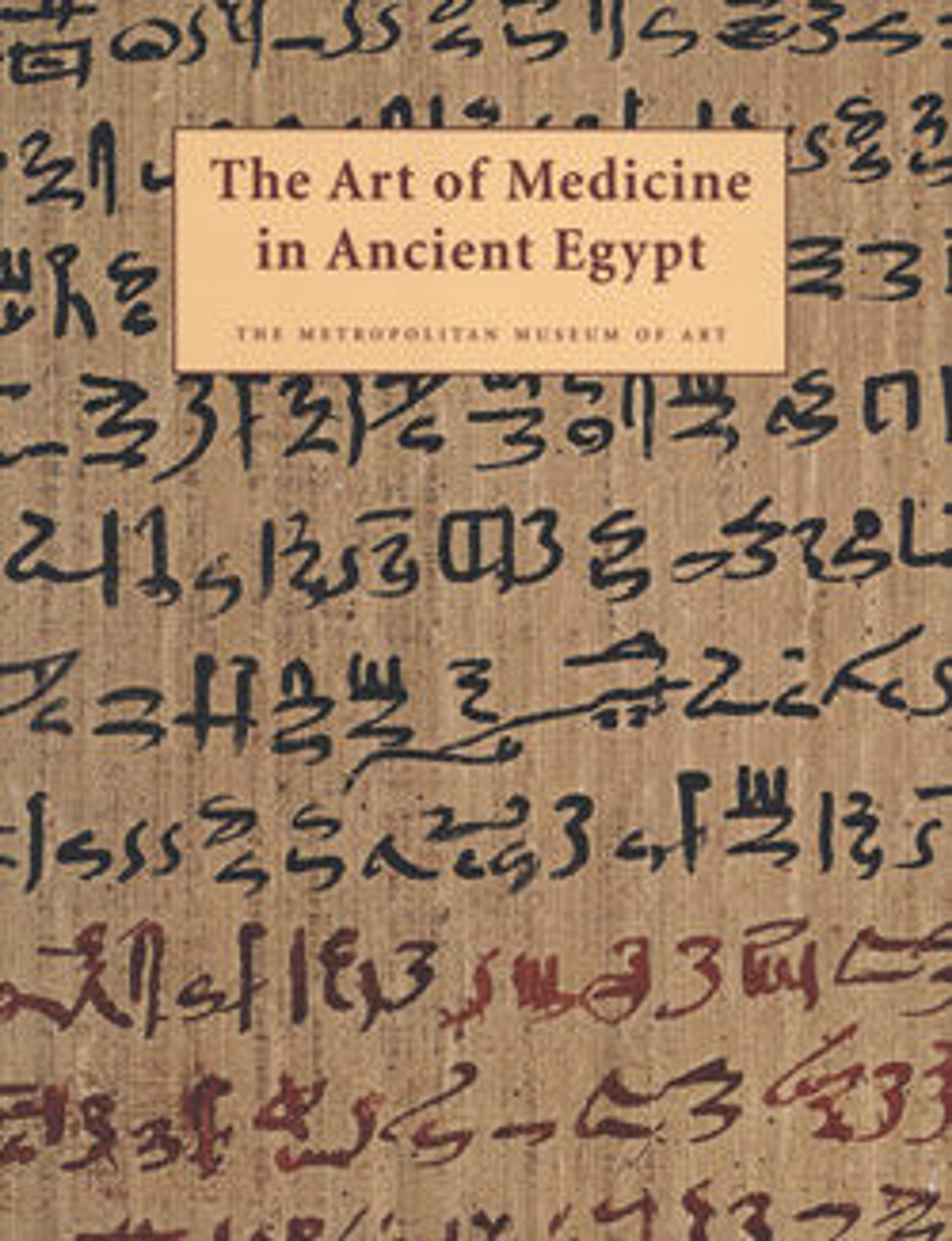Bottle in the Form of a Pomegranate
Pomegranate juice was prized as a drink, but it can also be used as an astringent to shrink tissues and reduce swelling in wounds. This jar probably held juice for consumption as a drink. A smaller, green jar in the collection (44.4.52) depicts the fruit in its unripened state, when the juice is too sour to drink, and may have juice intended for medicinal purposes.
The pomegranate did not arrive in Egypt until the beginning of the New Kingdom, when it was probably brought back from western Asia during the military campaigns of the early Eighteenth Dynasty. While the fruit may initially have been available only as an import, pomegranate trees were soon planted in Egyptian gardens.
The attributes of the fruit served as the point of departure for an elegant, stylized vessel shape with a scalloped rim. Pomegranates in nature can range from green to yellow to red, so the choices for these vessels are not unrealistic. The juice was prized as a drink and often added to wine, but it can also be used as an astringent to shrink tissues and reduce swelling in wounds.
The pomegranate did not arrive in Egypt until the beginning of the New Kingdom, when it was probably brought back from western Asia during the military campaigns of the early Eighteenth Dynasty. While the fruit may initially have been available only as an import, pomegranate trees were soon planted in Egyptian gardens.
The attributes of the fruit served as the point of departure for an elegant, stylized vessel shape with a scalloped rim. Pomegranates in nature can range from green to yellow to red, so the choices for these vessels are not unrealistic. The juice was prized as a drink and often added to wine, but it can also be used as an astringent to shrink tissues and reduce swelling in wounds.
Artwork Details
- Title:Bottle in the Form of a Pomegranate
- Period:New Kingdom, Ramesside
- Dynasty:Dynasty 19–20
- Date:ca. 1295–1070 B.C.
- Geography:From Egypt
- Medium:Glass, opaque
- Dimensions:H. 12 cm (4 3/4 in); diam. 8.6 cm (3 3/8 in)
- Credit Line:Purchase, Edward S. Harkness Gift, 1926
- Object Number:26.7.1180
- Curatorial Department: Egyptian Art
More Artwork
Research Resources
The Met provides unparalleled resources for research and welcomes an international community of students and scholars. The Met's Open Access API is where creators and researchers can connect to the The Met collection. Open Access data and public domain images are available for unrestricted commercial and noncommercial use without permission or fee.
To request images under copyright and other restrictions, please use this Image Request form.
Feedback
We continue to research and examine historical and cultural context for objects in The Met collection. If you have comments or questions about this object record, please contact us using the form below. The Museum looks forward to receiving your comments.
